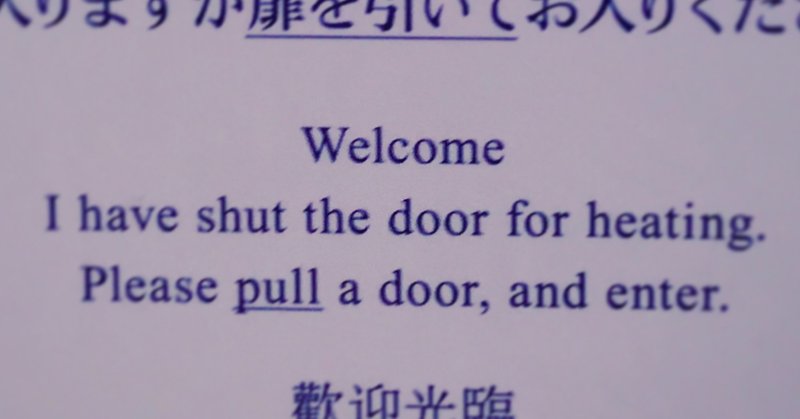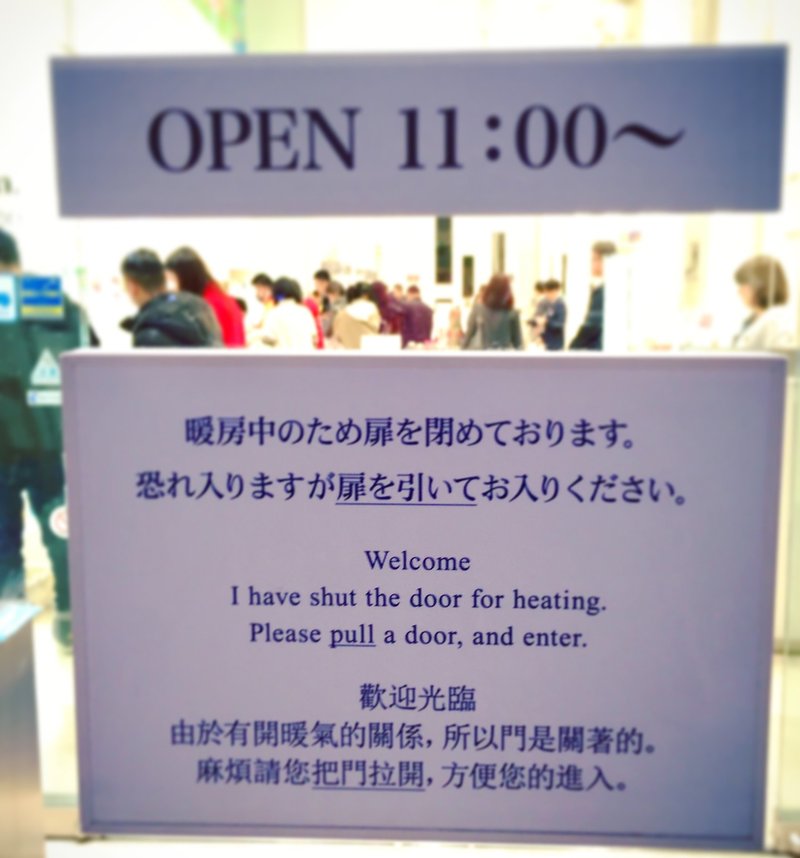
I have shut the door 〜私はドアを閉めました〜

Found a sign on a door with a cute English sentence.
The grammar mistake is not a big issue, but it was unusual to see a statement with a pronoun “I” used on a sign like this!
(It also has examples of problems that result from translating Japanese directly word for word.)
とあるお店のサインに、こんなかわいい文章が!
実は、お店のサインでは、自分を指す “I” の代名詞を使うことはあまりないのです。ちょっとクスっとなりました!
📝⭐️📝⭐️📝⭐️📝⭐️📝⭐️📝⭐️📝⭐️📝⭐️📝⭐️📝⭐️📝⭐️📝⭐️📝
🙅♀️ × I have shut the door for heating.
私は暖房のためドアを閉めました。
⬇︎
🙆♀️ ◎ The door is closed for heating.
暖房のためドアを閉めております。
📝 このように「ドアが閉まっている」状態を表す際は is shut ではなく is closed の方が多いです
または
We are open — Please pull door to enter.
Heating system in operation
Door is closed to keep heat inside.
営業中です ー ドアを引いてお入りください。
暖房が稼動中のためドアを閉めております。
📝 最初にお客さんが知りたい情報 (= 営業中) を示し、暖房とドアが閉まっていることはその後に簡潔に述べます。
以前ご紹介した標識や貼り紙の文言と同様、このような場合は完全な文章や冠詞が無い文でもOKです!
💁♀ ちなみに…
❌ Please pull a door, and enter.
そこにあるひとつのドアを引き、入店してください。
📝 冠詞が “a” になっているため、どのドアを指しているか不明です。その特定のドアのことであれば “the door” が正しいです。
✅ Please pull the door to enter.
ドアを引いてご入店ください。
✅ Pull to Enter
ドアを引いてご入店ください
📝 さらに短く
📝⭐️📝⭐️📝⭐️📝⭐️📝⭐️📝⭐️📝⭐️📝⭐️📝⭐️📝⭐️📝⭐️📝⭐️📝
この記事が気に入ったらサポートをしてみませんか?
